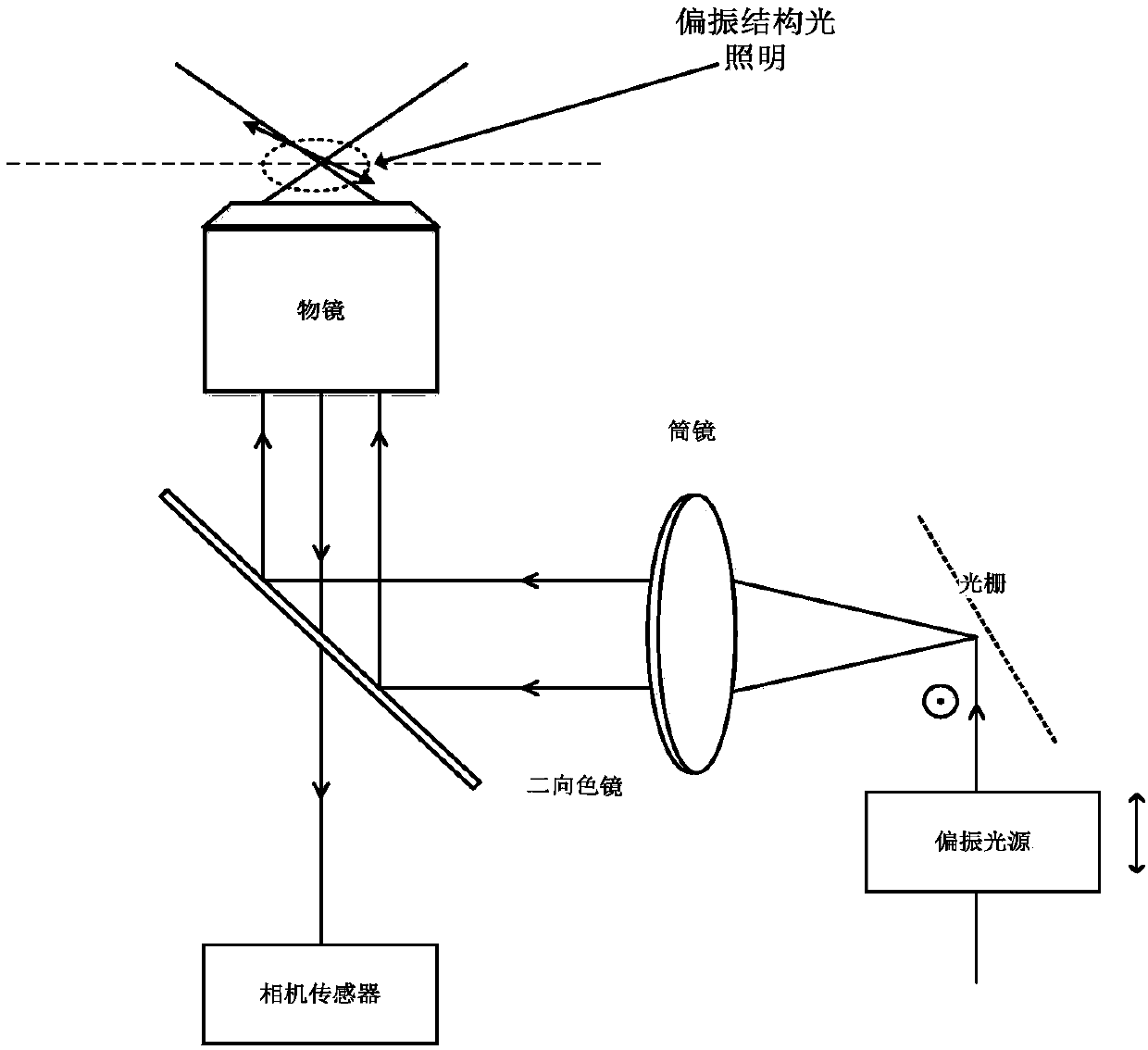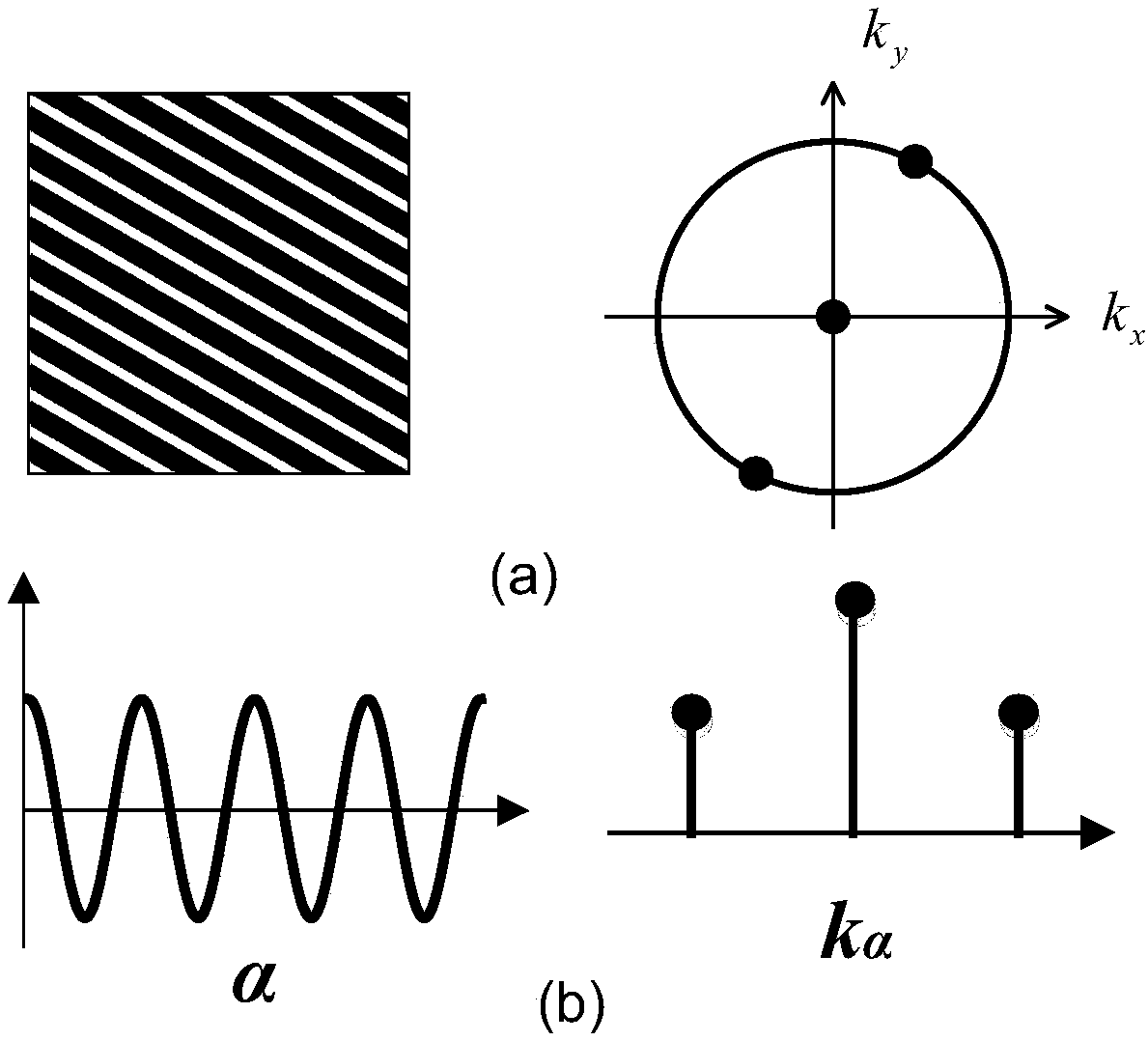Structured light illumination-based fluorescent dipole orientation method
A technology of structured light illumination and dipole, which is applied in the field of super-resolution fluorescence microscopy, can solve the problems of image quality degradation, difficulty in obtaining, and total light intensity reduction, and achieves a highly popularized, low-cost and easy-to-implement Effect
- Summary
- Abstract
- Description
- Claims
- Application Information
AI Technical Summary
Problems solved by technology
Method used
Image
Examples
Embodiment Construction
[0023] The present invention will be described in detail below in conjunction with the accompanying drawings. However, it should be understood that the accompanying drawings are provided only for better understanding of the present invention, and they should not be construed as limiting the present invention.
[0024] The point spread function of an ordinary optical system is usually a Gaussian spot, which acts as a low-pass filter in the frequency domain. Since the collected pictures can be regarded as the convolution of the fluorescence sample information and the system point spread function, the ordinary imaging process can be regarded as frequency selection in the frequency domain. Due to the loss of high-frequency information, the small-scale change information in the air domain cannot be obtained, and the resolution of the system is limited. Therefore, after structured light irradiation, the optical transfer function of the system is widened in the frequency domain in t...
PUM
 Login to View More
Login to View More Abstract
Description
Claims
Application Information
 Login to View More
Login to View More - R&D
- Intellectual Property
- Life Sciences
- Materials
- Tech Scout
- Unparalleled Data Quality
- Higher Quality Content
- 60% Fewer Hallucinations
Browse by: Latest US Patents, China's latest patents, Technical Efficacy Thesaurus, Application Domain, Technology Topic, Popular Technical Reports.
© 2025 PatSnap. All rights reserved.Legal|Privacy policy|Modern Slavery Act Transparency Statement|Sitemap|About US| Contact US: help@patsnap.com



